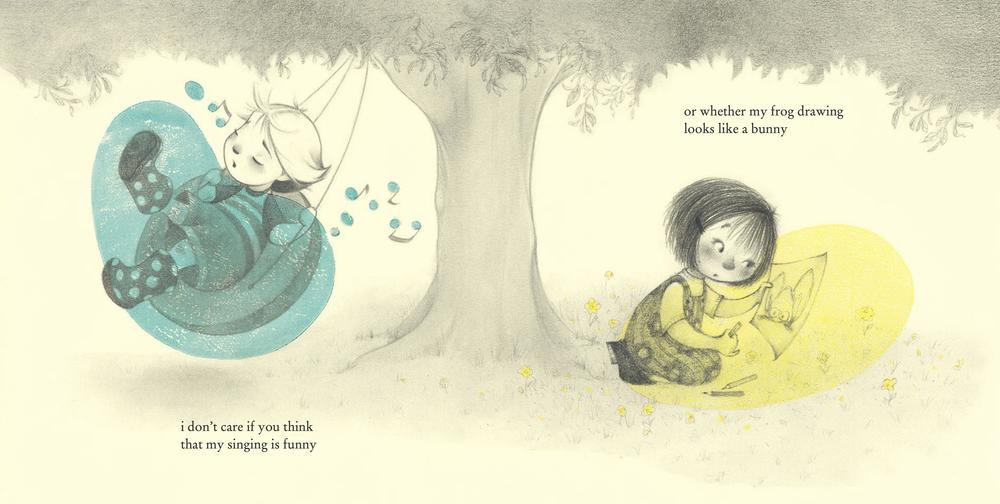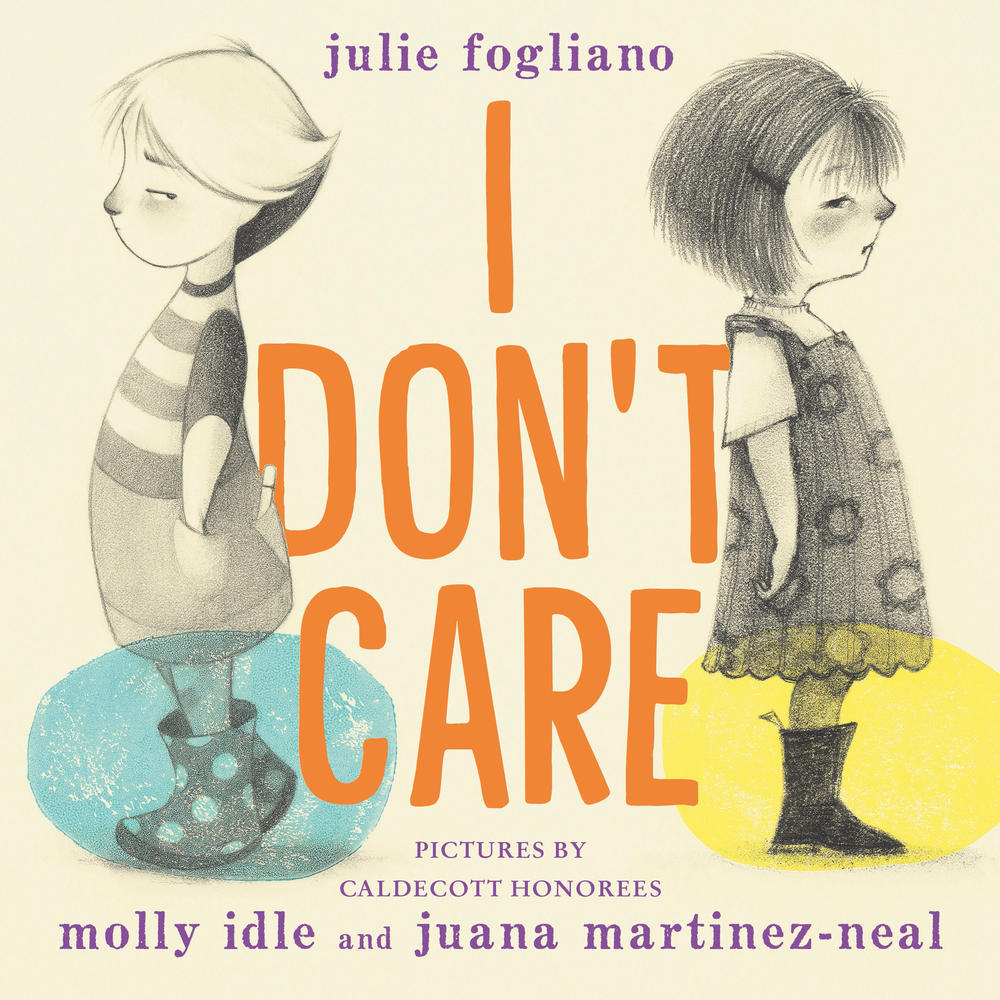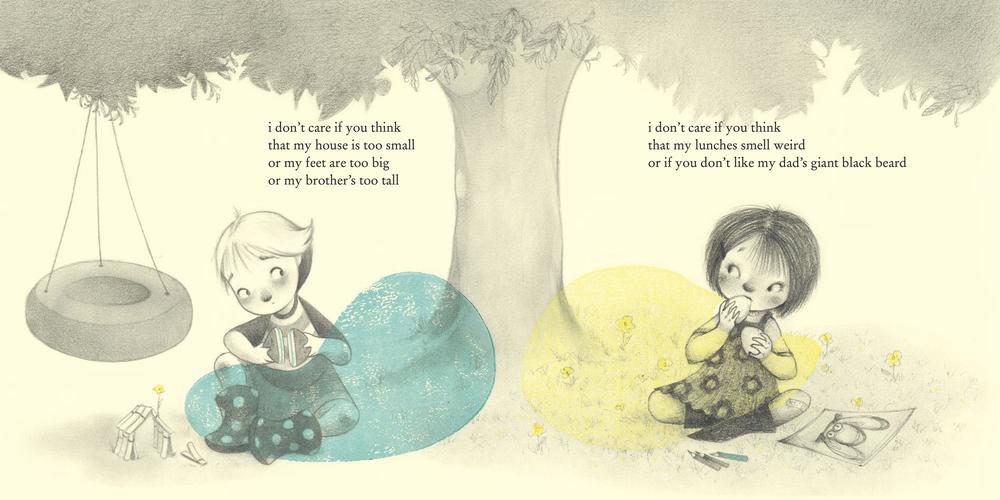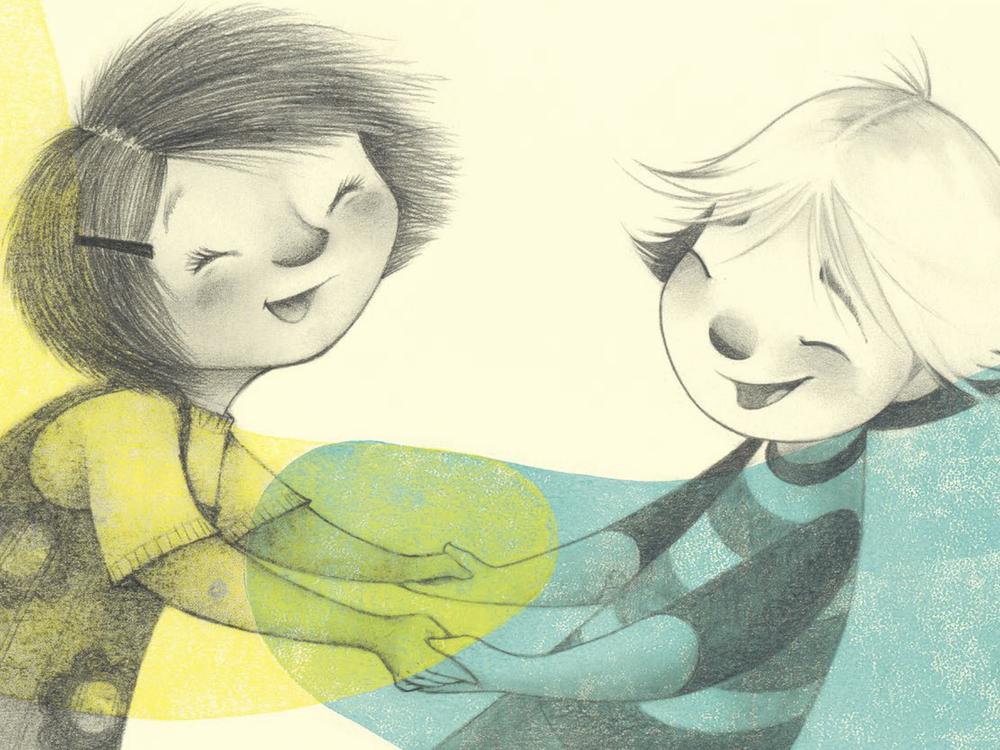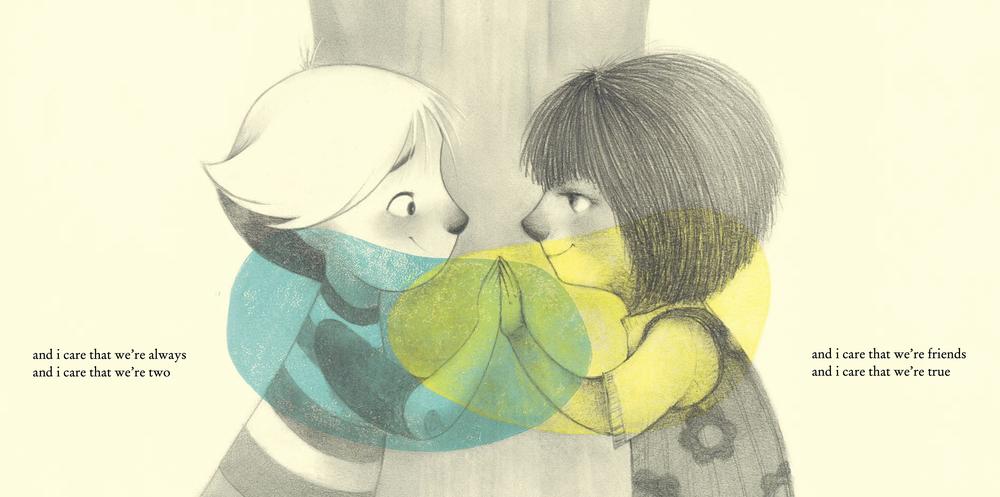Section Branding
Header Content
'I Don't Care' is a book about what matters in friendship, illustrated by best friends
Primary Content
When you're looking for a friend, there are things that matter, and things that don't. Julie Fogliano's I Don't Care is about what's not important ("I really don't care what you think of my hair, or my eyes or my toes or my nose") as well as what is ("I care if you wish, and I care if you sing, and I care if you like to lean back when you swing.")
I Don't Care started out as a freewriting exercise a couple of years ago. It came from a jumble of childhood memories, but it wasn't about anyone in particular. "I just wrote, like, a whole bunch of pages of pretty much nonsense," says Fogliano.
But then, the story ended up on the desk of illustrator Molly Idle, who read the first line and immediately knew what the story was about.
"This is a story about two people who are on the surface maybe seemingly very different, but at their cores are very, very similar," says Idle, "and I thought, 'Oh my gosh, that's just like me and Juana!'"
That would be Juana Martinez-Neal.
Idle and Martinez-Neal met 16 years ago. They were both artists and first-time moms, but Martinez-Neal's child was a year older than Idle's.
"I just loved her artwork and and was full of admiration for her doing this thing that I was trying to do," says Idle. "And I said, 'Tell me, does it get easier?' And Juana just looked me directly in the eyes and said, 'No.' And I thought: talent and total honesty. This woman is the whole package."
They became critique partners — and then best friends. Idle decided they should co-illustrate I Don't Care, so in true best friend form, she volunteered her for the job.
"I was nervous and confused and did not want to say no," says Martinez-Neal. "My best friend, one of my favorite authors ... how could I say no?"
They thought it would be pretty simple. The two illustrators lived close to each other in Arizona. They could work at one person's studio one day, then the other's studio the next. Then Martinez-Neal moved across the country to Connecticut, and it became a bit more complicated.
"It definitely influenced the way in which we wanted to make art," says Idle. "Because we knew that we had to use mediums and color palettes that we could keep consistent despite distance and despite having to ship the art back and forth."
They also had to make a lot of compromises. Martinez-Neal loves texture; Idle does not. Martinez-Neal uses heavy brushstrokes; Idle's work is very smooth, almost seamless. They decided to level the playing field by using graphite. They each sketched their own character and then swapped pages. They put their sketches together in Photoshop to see if it would work.
"It was like this wonderful ... creative exercise," says Idle. "Figuring out, like, wow, I draw necks twice as thick as you draw necks. Or, you know, you draw heads bigger than I draw heads."
Since they also use color in different ways, Idle and Martinez-Neal decided that they would only use two. They chose their favorites — yellow for Martinez-Neal and teal for Idle.
They used linocut stamps and ink to layer the colors over the graphite drawings. And they placed them intentionally on the center of each page, to draw the reader's attention to the emotional center of each page.
Where Fogliano writes, "I don't care if you think that my house it too small or my feet are too big or my brother's too tall," the teal color spreads out from the little girl's polka dot boots, towards her friend.
"The color also grows throughout the book," says Juana Martinez-Neal. At the beginning, when the two friends are uncertain about each other, the color shapes are far apart on the page.
"They get closer and closer and larger until they just almost touch," says Molly Idle. As the little girls start to become friends, she explains, "There's like a little bit of overlap, and then suddenly there's places where they're entirely overlapping."
Where their hands meet, the teal and yellow overlap and make green.
"If I didn't know, I would never have thought that it was two people," says Julie Fogliano. She says it took her four years to write I Don't Care, and even after spending all that time with it, seeing the illustrations is what made it come to life.
"It just kind of gave it more depth, I think," she says. "Knowing the personal connection between the two of them."
Martinez-Neal says her favorite line comes at the end of the book: "I care that you're you and I'm me. I care that we're us and I care that we're we."
"I love that because it acknowledges that we are individuals and yet together we are something else," she says. "It's the individuality that makes the friendship so wonderful and strong."
The best writing, says Idle, comes from a place so personal that it resonates on a much deeper level. She says her hope for kids reading this book is that they can also see themselves in it — just as she saw herself and her best friend.
Copyright 2022 NPR. To see more, visit https://www.npr.org.
